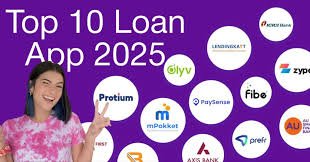What Is An Auto Loan And How Does It Work?
An auto loan is a financial product that allows individuals to borrow money to purchase a vehicle, whether it’s new or used. In this arrangement, the lender provides the borrower with the necessary funds to buy the car, and in return, the borrower agrees to repay the loan over a specified period, typically through monthly installments. The vehicle itself serves as collateral for the loan.
Key Takeaways
- Secured Loan: An auto loan is a secured loan, with the vehicle serving as collateral.
- Loan Terms: Typical loan terms range from 24 to 84 months.
- Interest Rates: Interest rates can vary based on credit score and loan term.
- Down Payment: A larger down payment can reduce the loan amount and monthly payments.
- Repayment: Timely repayments are essential to avoid penalties and damage to credit score.
- Refinancing: Refinancing can be considered for better loan terms.
- Comparison: It’s important to compare loan offers from different lenders to find the best terms.
How Do Auto Loans Work

Auto loans are generally secured loans, meaning the vehicle purchased acts as collateral. This security allows lenders to offer lower interest rates compared to unsecured loans. The loan amount, interest rate, repayment term, and monthly payment are determined based on factors such as the borrower’s creditworthiness, income, and the vehicle’s value.
Upon approval, the lender disburses the loan amount to the car dealer or seller, and the borrower takes possession of the vehicle. The borrower then repays the loan in fixed monthly installments until the loan is fully paid off.
An auto loan is a secured financial product that allows individuals to borrow money to purchase a vehicle, with the vehicle itself serving as collateral. This means that if the borrower fails to repay the loan, the lender has the right to repossess the vehicle to recover the outstanding debt. Understanding the mechanics of auto loans is crucial for prospective car buyers to make informed financial decisions.
🔑 Key Components of an Auto Loan
- Principal Amount: This is the total amount borrowed to purchase the vehicle.
- Interest Rate: The cost of borrowing, expressed as a percentage of the principal amount. Auto loans typically offer lower interest rates compared to unsecured loans due to the collateral involved.
- Loan Term: The duration over which the loan is to be repaid, commonly ranging from 24 to 84 months. Shorter loan terms often result in higher monthly payments but less total interest paid over the life of the loan.
- Monthly Payment: The fixed amount paid by the borrower each month, which includes both principal and interest.
- Down Payment: An upfront payment made by the borrower to reduce the loan amount. A larger down payment can lower monthly payments and may improve loan terms.
- Annual Percentage Rate (APR): The total cost of the loan, including interest and fees, expressed as an annual percentage. It’s essential to compare APRs when evaluating loan offers, as they provide a more comprehensive view of the loan’s cost.
🛠️ How the Auto Loan Process Works
- Application: The borrower applies for an auto loan through various channels, including banks, credit unions, online lenders, or directly through car dealerships.
- Approval: Lenders assess the borrower’s creditworthiness by reviewing factors such as credit score, income, employment history, and debt-to-income ratio. A higher credit score often results in better loan terms.
- Loan Offer: Upon approval, the lender presents a loan offer detailing the principal amount, interest rate, loan term, and any associated fees.
- Acceptance: If the borrower agrees to the terms, they accept the loan offer, and the lender disburses the funds to the car seller or dealership.
- Repayment: The borrower makes regular monthly payments to the lender until the loan is fully repaid. Failure to make timely payments can result in penalties or repossession of the vehicle.
🧾 Types of Auto Loans
- New Car Loans: Specifically for purchasing new vehicles. These loans often come with lower interest rates and longer loan terms.
- Used Car Loans: For purchasing pre-owned vehicles. Interest rates may be slightly higher, and loan terms may be shorter compared to new car loans.
- Refinanced Auto Loans: Allows borrowers to replace their existing auto loan with a new one, potentially at a lower interest rate or better terms.
- Lease Buyout Loans: For individuals who wish to purchase the vehicle they have been leasing.
- Dealer Financing: Offered directly through the car dealership. Dealers may work with lenders to provide financing options to buyers.
- Bank or Credit Union Loans: Traditional financial institutions that offer auto loans to qualified borrowers, often at competitive interest rates.
- Online Lenders: Digital platforms that provide auto loans, often with a streamlined application process.
- Personal Loans for Auto Purchase: Unsecured loans that can be used for purchasing a vehicle, though they may come with higher interest rates due to the lack of collateral.
💡 Tips for Managing an Auto Loan
Insurance Requirements: Lenders often require borrowers to maintain comprehensive auto insurance coverage throughout the loan term.
Budgeting: Ensure that the monthly loan payment fits comfortably within your budget to avoid financial strain.
Early Repayment: Paying off the loan early can reduce the total interest paid over the life of the loan. However, check for any prepayment penalties before making extra payments.
Loan Refinancing: If interest rates drop or your credit score improves, consider refinancing your auto loan to secure better terms.
Benefits of Auto Loans
- Affordability: Allows individuals to purchase a vehicle without paying the full price upfront.
- Credit Building: Timely repayments can help improve the borrower’s credit score.
- Flexible Terms: Various loan terms and repayment options to suit different financial situations.
- Ownership: Leads to full ownership of the vehicle once the loan is paid off.
1. Immediate Vehicle Ownership
One of the primary benefits of an auto loan is the ability to own a vehicle immediately. Unlike leasing, where you pay to use the vehicle for a specified period, financing allows you to make the car your own from the outset. This ownership provides flexibility in how you use and maintain the vehicle.
2. Preservation of Savings
Opting for an auto loan means you don’t need to deplete your savings to purchase a car. This preservation of funds ensures you have financial reserves for other needs, such as emergencies or investments. It also allows you to maintain liquidity, which can be crucial for financial stability.
3. Flexible Loan Terms
Auto loans typically offer a range of repayment terms, allowing borrowers to choose a duration that fits their financial situation. Shorter terms may have higher monthly payments but result in less interest paid over the life of the loan, while longer terms can lower monthly payments but may increase total interest costs. This flexibility helps in budgeting and financial planning.
4. Building Credit History
Consistently making timely payments on an auto loan can positively impact your credit score. A good credit history is beneficial for future financial endeavors, such as applying for mortgages or other loans. It demonstrates to lenders that you are a responsible borrower.
5. Access to Better Vehicles
Financing a car purchase can enable you to afford a higher-quality or newer vehicle than you might be able to with cash alone. This access to better vehicles often means improved safety features, better fuel efficiency, and enhanced reliability, contributing to long-term satisfaction and value.
6. Potential Tax Benefits
In certain cases, the interest paid on an auto loan may be tax-deductible, especially if the vehicle is used for business purposes. Consulting with a tax professional can help determine if you qualify for such deductions, potentially reducing your overall tax liability.
7. Opportunity for Refinancing
If interest rates decrease or your financial situation improves, you may have the option to refinance your auto loan. Refinancing can lead to lower interest rates or more favorable loan terms, potentially saving you money over the life of the loan.
Risks and Considerations

1. Depreciation and Negative Equity
Vehicles begin to depreciate the moment they’re driven off the lot. Within the first year, a new car can lose up to 25% of its value. If you finance the full purchase price, you may owe more than the car is worth—a situation known as negative equity. This becomes problematic if you need to sell or trade in the vehicle before the loan is paid off, as the sale price may not cover the remaining loan balance.
2. High Monthly Payments
Auto loans can lead to substantial monthly financial obligations. In the U.S., the average monthly payment for a new car loan was approximately $742 in late 2024. This amount, combined with insurance and maintenance costs, can strain household budgets.
3. Long-Term Loan Commitments
Long-term auto loans, such as those extending 72 months or more, are increasingly common. While they offer lower monthly payments, they also result in higher total interest paid over the life of the loan. Additionally, these extended terms can lead to negative equity, as the vehicle’s depreciation may outpace loan repayment.
4. Interest Rate Variability
Interest rates on auto loans can vary based on factors like credit score, loan term, and lender policies. Even a slight increase in the interest rate can significantly impact the total amount paid over the loan’s duration. It’s essential to shop around and compare rates from different lenders to secure the most favorable terms.
5. Prepayment Penalties
Some lenders impose penalties for paying off an auto loan early. These prepayment penalties can negate the benefits of reducing interest costs by settling the loan ahead of schedule. It’s crucial to review the loan agreement for any such clauses before committing.
6. Impact on Credit Score
Taking out an auto loan can affect your credit score. While timely payments can improve your credit history, missed or late payments can have the opposite effect. Additionally, co-signing a loan for someone else makes you equally responsible for repayment, and any defaults can harm your credit standing.
7. Limited Flexibilit
Once committed to an auto loan, your financial flexibility may be reduced. Selling or trading in the vehicle can be complicated if you owe more than its current value. Additionally, unforeseen circumstances like job loss or relocation can make it challenging to manage loan repayments.
Also Read:- What Is a Student Loan and How Does It Work?
Conclusion
Auto loans are a practical solution for individuals looking to purchase a vehicle without paying the full price upfront. Understanding the components, benefits, and potential risks associated with auto loans is crucial for making informed financial decisions. By carefully considering loan terms, comparing lenders, and ensuring timely repayments, borrowers can effectively manage their auto loans and enjoy the benefits of vehicle ownership.
FAQs
- What credit score is needed for an auto loan? While requirements vary by lender, a higher credit score generally increases the chances of loan approval and may result in better interest rates.
- Can I get an auto loan with no credit history? It may be challenging, but some lenders offer loans to individuals with limited or no credit history, often at higher interest rates.
- What is the minimum down payment required? Down payment requirements vary, but a larger down payment can reduce the loan amount and potentially lower monthly payments.
- Can I pay off my auto loan early? Many lenders allow early repayment, but it’s important to check for any prepayment penalties that might apply.
- What happens if I miss a payment? Missing a payment can result in late fees, increased interest rates, and potential damage to your credit score.
- Is it better to finance through a dealer or a bank? It depends on individual circumstances. Dealers may offer convenience, while banks might provide better interest rates. It’s advisable to compare options.
- Can I refinance my auto loan? Yes, refinancing is possible and can be beneficial if it results in a lower interest rate or better loan terms.







